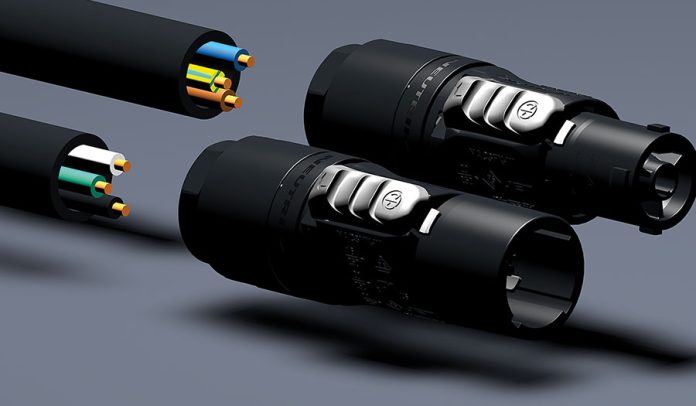Based on the Low Voltage Directive (LVD 2014/35/EU), a new standard has now been set for the world of cabling. EN IEC 60799:2021 (IEC 60799:2018) specifies the requirements for cord sets and interconnected cord sets.
The LVD ensures that electrical equipment within certain voltage limits provides a high level of protection for European citizens, and benefits fully from the single market and covers health and safety risks on electrical equipment operating with an input or output voltage of between 50 and 1,000v for alternating current and 75 and 1,500v for direct current. Due to this range, the legislation applies to a wide range of electrical equipment for both consumer and professional usage.
Those who do not adhere to this latest measure could face serious legal consequences, from a hefty fine to jail time. Requirements for locking power connectors of an assembled cable are described EN IEC 60320-1:2021. On connecting to an appliance any connector not fulfilling the requirements of this standard is simply not allowed.
Neutrik’s Mark Perrins and Stefan Frick explained how this legislation could impact those in the live entertainment sphere. “This legislation came into effect in April 2016, although it has recently been implemented with greater effect,” Frick clarified. “It applies to a wide range of electrical equipment including power cables. To be more specific: appliance connection cables (cord sets) and continuity appliance connection cables (interconnection cord sets).”
These rules mean that cables entering and being used in Europe must be CE marked – a logo that most will be familiar with. A prerequisite for the use of the CE mark is a declaration of conformity. The declaration of conformity is a legal document that formally declares the compliance of a particular product, that falls within the scope of CE marking, with the essential health and safety requirements of the relevant product safety directives. By signing the declaration of conformity, the manufacturer or importer takes full responsibility and liability for the product’s compliance with the applicable legislation.
“Connectors also fall under this legislation, so many years ago we ensured our products were compliant,” explained Perrins. “In fact, we’re the only manufacturer worldwide with cable connectors and chassis certified according to IEC 60320-1 required by the European Low Voltage Directive.”
With the proliferation of products coming from other regions, the duo believes there is more chance that end users might come across non-certified or falsely CE marked equipment. If a product unlawfully affixes the CE marking, the government of the specific member state can enforce measures.Products can be withdrawn from the market and penalties can be imposed. Manufacturers, importers and/or authorised representatives will be held liable if the CE mark has been fixed illegally or if the product does not meet the standards indicated by the EU harmonised standards.
For each directive or product group, one or more supervisory authorities or inspection services have been designated at a national level in the EU countries. These institutions – often government bodies – inspect products not only for CE marking but also for other legal aspects. In the Netherlands, failure to affix the CE marking or not having a valid EU Declaration of Conformity is a violation of the Dutch Economic Offences Act. Penalties of up to six months in custody could be imposed, or a fine of € 20,500 per offence. “This legislation is all about safety and is not just for the sake of it,” asserted Frick.
“If you introduce the public to non-compliant power, you will affect your public liability insurance,” added Perrins, explaining why event organisers and venue owners should take particular interest in this topic.
Frick continued: “We want to make sure the OMs and manufacturers understand that they are also at legal risk. If a manufacturer’s MD or compliance officer signs off on a product being CE compliant, it’s not just a case of a hefty fine but in Germany the punishment can be as severe as a four-year jail sentence.”
Frick cited a recent open letter by VDE – a German certification institution. “It states that it’s not sufficient that only the components which are connected to a cord set or an interconnection cord set are certified according to their related component standards. The compliance of these requirements of EN 60799 can be verified by testing and certification at an independent testing institute. Thus, building a new product based on certified components will not result in a compliant product.”
Going forward, Neutrik will continue to warn the industry of how to remain up to date with these regulations with a white paper as well as webinars expanding on the sector-wide issue.
This article originally appeared in issue #276 of TPi, which you can read here.
Words: Stew Hume
Photos: Neutrik






